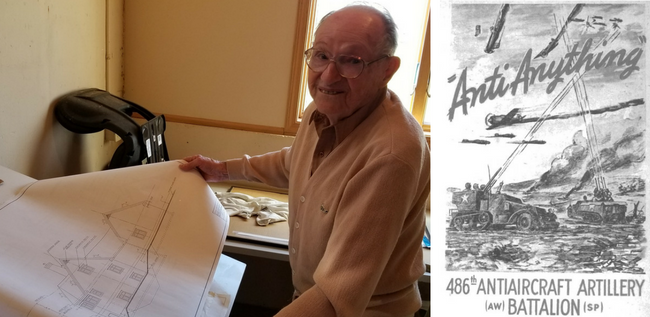“I guess they mean it,” said newly-drafted Emile Dufresne, as he and his comrades were dropped over the front of a boat onto Omaha Beach in Normandy, France in 1944. It is hard to believe that months before, he was graduating high school. Now, he was thrust into the Second World War; playing a part in one of the most significant moments in human history.
Cherryland member Emile Dufresne was born in New Auburn, Maine in 1923. Like many young men at that time, he didn’t anticipate being in the Army after high school. Rather, he developed an interest in pattern-making for casting. “In high school, one of my teachers took me and another student on a tour of MIT. In this huge room, I saw these beautiful, solid mahogany wooden gears, in all different designs and patterns, and I said to myself, ‘Wow, this is really something!’”
Not long after graduating high school, Dufresne received some staggering news. “In November 1942, I got a letter from President Roosevelt saying, ‘Show up on the 6th of January ’43. You’re in the Army.’”
From his landing on Omaha Beach in June 1944 to December 1945, Dufresne worked as a medic in the 486th Armored Anti-Aircraft Battalion in the First Army’s 3rd Armored Division. His battalion fought in key countries throughout the European Theater, including France, Belgium, and Germany.
During that time, Dufresne witnessed great triumphs for Allied Forces, including the U.S. troops crossing the Rhine River via pontoon bridge and conquering the city of Cologne, Germany. One such triumph occurred near Mons, Belgium. U.S. troops were pushing into enemy territory, faster than they imagined, to reach the German border and the Siegfried Line, a key German defensive front.
“We had driven into Belgium. All of our guns were facing ahead of us,” explained Dufresne. “And within 15 minutes, they were ordered to shoot back on the highway coming out of France. We were past the enemy lines into German country and our infantry were 40 miles behind us. We trapped the Germans between the infantry and our field artillery!”
Unfortunately, not every moment was filled with cheers of victory for Dufresne. In April 1945, he and his fellow troops moved toward Nordhausen, Germany, where they came upon the remaining prisoners of the Mitttelbau-Dora concentration camp. What he saw was shocking.
“The Nazis were working their prisoners 16-hour days on 10 ounces of soup and 4 ounces of black bread,” recalled Dufresne. “And whenever they got too weak, the SS guards would kick them. If they didn’t get up right away, they piled them on top of the long row of their comrades that were just in their last wave of breath, just to die.”
From liberating the concentration camp to tending to the wounded at the Battle of the Bulge, Dufresne was forced to experience war’s brutality firsthand. “We were all just kids,” said Dufresne, holding back tears. “But that was war.”
When he returned to the United States, Dufresne took an apprenticeship in patterning near his hometown and began his career. In 1952, after seeing a job listing in a monthly trade publication, Dufresne moved to Muskegon, Michigan and made patterns for military equipment and engine manufacturers. He has lived in Michigan ever since.
Today, Dufresne still exercises his patterning skills with youthful determination, constructing beautiful handcrafted furniture, tending to his flawless yard, and drawing up plans for new additions to his home.
Nearly three quarters of a century later, Dufresne still remembers with great clarity his part in the events of World War II. But if you were to ask him to sum up all of those experiences, he would give you a chuckle. “When you reach halfway through your 95th year, you’ve seen a lot.”



This awesome man is an old customer of mine. I was always too enthralled with his stories to get any personal information. Is there any way to get in touch with him?
Hi Ryan – While we can’t give out his contact information, if we hear from him, we’ll mention that you are trying to get in touch. Thanks!
We just met this man today at Culvers. He was wearing a hat that has WWII on it. I thanked him for his service. After he finished eating he stopped by our table and told us his military history and that he would be 100 in October. He brought me to tears and I gave him a hug before he left What an honor.